When I first noticed the edge of my laminate countertop starting to peel and lift, I knew it was something I couldn’t ignore for long. Laminate countertops are known for their durability and affordability, but like anything, they can experience wear and tear over time. The edge of the countertop is especially prone to damage, whether it’s from moisture seeping in or daily use causing the adhesive to weaken. I wasn’t quite ready to replace the entire countertop, so I decided to repair the edge myself, which turned out to be easier than I initially thought.
The first thing I did was assess the damage to see how extensive it was. In my case, it was just a small section of the laminate edging that had started to pull away, but sometimes the problem can spread further if left unchecked. The most important part of the repair process is catching it early before the damage becomes worse. If moisture seeps into the exposed particleboard underneath the laminate, it can cause swelling, and at that point, the repair becomes much more complicated. So, I knew I had to act fast.
I gathered the materials I needed: contact cement, a putty knife, clamps, and some sandpaper. Contact cement is the go-to adhesive for laminate because it creates a strong, lasting bond between the laminate and the substrate. It’s important to use the right kind of adhesive, as some household glues won’t hold up to the moisture and daily wear that countertops are exposed to. I also made sure to have clamps on hand to hold the laminate in place while the glue dried, as this ensures a smooth, flush finish.
Before applying any adhesive, I had to clean the area thoroughly. Any dirt, grease, or debris on the surface can prevent the adhesive from bonding properly, so I wiped down the area with a mild cleaner and made sure it was completely dry before moving on. Then, I used the sandpaper to lightly rough up the back of the laminate and the edge of the countertop where I would be reattaching it. This step helps the adhesive grip better and creates a more secure bond.
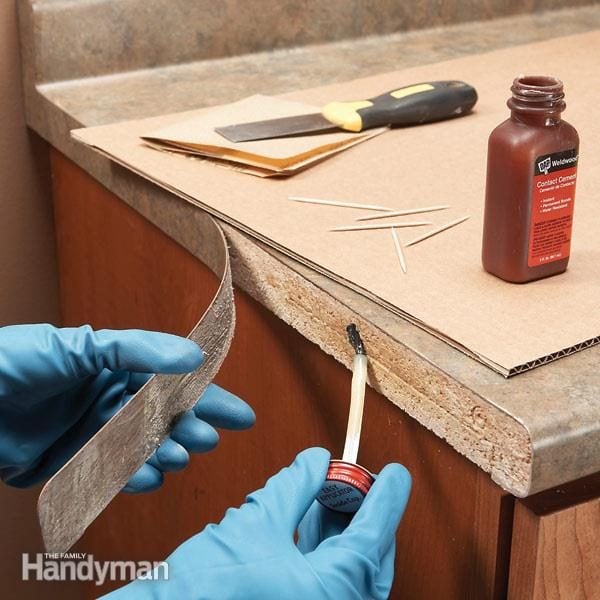
Once everything was prepped, I applied the contact cement to both the back of the laminate and the edge of the countertop. The tricky part with contact cement is that you need to let it dry for a few minutes until it becomes tacky before pressing the two surfaces together. If you press them together while the adhesive is still wet, it won’t hold as well. I made sure to follow the instructions on the adhesive and waited the recommended amount of time before moving forward.
When the adhesive was ready, I carefully aligned the laminate back in place. This part required some patience because once the contact cement sticks, it’s difficult to reposition the laminate. I pressed down firmly along the entire edge to ensure that the laminate was securely attached, and I used my clamps to hold everything in place while the adhesive dried. Depending on the type of contact cement you use, drying times can vary, but I left the clamps on for several hours to be safe.
After the adhesive had dried and the clamps were removed, I inspected the edge to make sure everything was smooth and secure. There were a few spots where the laminate stuck out just slightly, so I used the putty knife to gently trim away any excess adhesive and smooth the edges. It’s important to be gentle here to avoid damaging the laminate or pulling it up again.
In some cases, especially if the edge has been damaged for a while, you might find that the laminate has chipped or cracked. In those situations, simply reattaching the old laminate might not be enough. If you’re dealing with chipped edges, you may need to trim away the damaged section with a utility knife and replace it with a new piece of laminate. I was fortunate that my laminate was still in good shape, so I didn’t need to go that route, but it’s something to keep in mind if your damage is more extensive.
Once the repair was done, I took a step back and was really pleased with how it turned out. The edge looked as good as new, and the repair was practically invisible. I felt a sense of satisfaction knowing I had fixed it myself without needing to hire a professional or replace the entire countertop. It was a simple, cost-effective solution that extended the life of my laminate countertop.
Maintaining laminate countertops isn’t difficult, but it does require some basic care to avoid issues like peeling edges. I now make a point to wipe down the edges regularly to keep moisture from seeping in, especially around the sink area where water is more likely to collect. By being mindful of spills and regularly checking the condition of the edges, I can prevent future problems before they start.
One thing I learned during this process is that it’s important to use a high-quality adhesive. I initially considered using a regular household glue, but after doing some research, I found out that contact cement is specifically designed for laminate repairs and creates a much stronger bond. Using the right materials made a big difference in the outcome of the repair.
If you’re thinking about tackling a laminate countertop edge repair yourself, I would definitely recommend giving it a try. As long as the damage is caught early and you have the right tools, it’s a relatively easy fix that can save you the cost of replacing the entire countertop. Plus, there’s something rewarding about knowing you’ve repaired something yourself and extended the life of your home’s features.
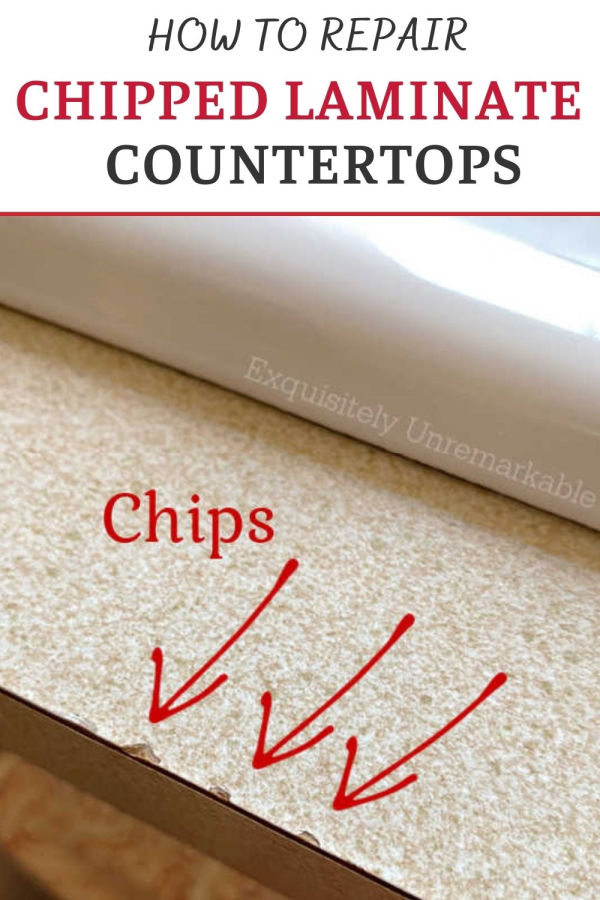
Common Mistakes to Avoid
One common mistake is rushing the adhesive process. With contact cement, you have to wait for it to become tacky before pressing the surfaces together. Pressing them together too soon can result in a weak bond that won’t hold over time. Patience is key here—follow the instructions on the adhesive carefully.
Another mistake is neglecting to clean the area properly before applying the adhesive. Dirt, grease, or debris can prevent the adhesive from bonding correctly, so it’s important to wipe down the surfaces and ensure they’re completely clean and dry before proceeding with the repair.
Last, some people overlook the importance of clamping the laminate while the adhesive dries. Without clamps, the laminate might not stay in place or bond as securely, leading to poor repair. Make sure to use clamps or heavy objects to keep the laminate firmly pressed against the countertop while the adhesive sets.
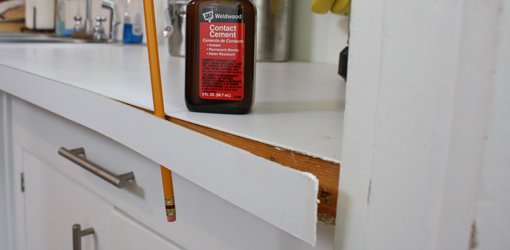
How do I fix a peeling laminate countertop edge?
To fix a peeling laminate countertop edge, clean the area thoroughly and sand the back of the laminate and the edge of the countertop lightly to help the adhesive bond. Apply contact cement to both surfaces and let it become tacky before pressing them together. Use clamps to hold the laminate in place while the adhesive dries, and trim away any excess once it’s dry.
What type of adhesive should I use for laminate countertop edge repairs?
Contact cement is the best adhesive for repairing laminate countertop edges. It’s designed to create a strong, lasting bond between the laminate and the countertop surface. Regular household glues may not hold up to the moisture and wear that countertops endure, so it’s important to use an adhesive specifically designed for laminate.
Can I replace a damaged section of laminate edging?
Yes, if the laminate is chipped or cracked, you can trim away the damaged section and replace it with a new piece of laminate. Make sure to carefully measure and cut the new piece to fit, and use contact cement to adhere it to the edge of the countertop. Clamping it in place while the adhesive dries ensures a secure bond.
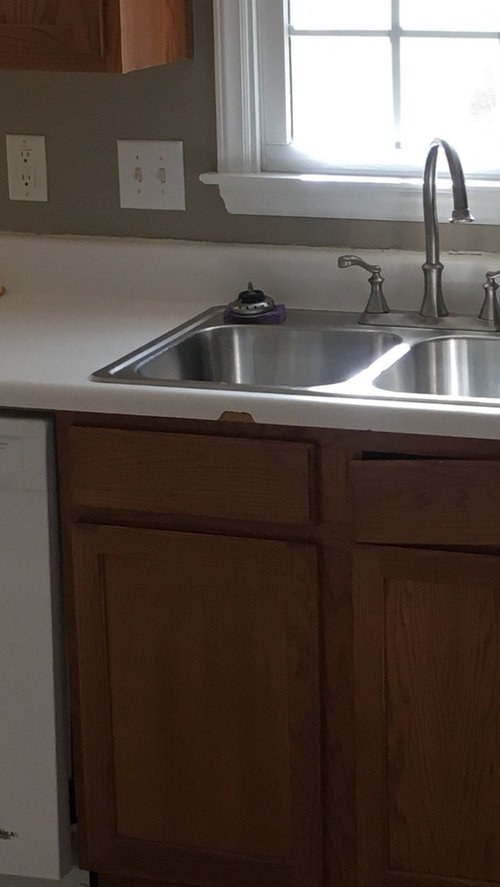
How long does it take for the adhesive to dry when repairing laminate?
The drying time for contact cement can vary depending on the brand, but it usually takes several hours to fully cure. It’s important to leave the clamps in place for as long as the adhesive manufacturer recommends to ensure a strong bond. I usually leave mine on for at least 4-6 hours to be safe.
What tools do I need to repair a laminate countertop edge?
For a basic laminate countertop edge repair, you’ll need contact cement, a putty knife, sandpaper, clamps, and possibly a utility knife if you need to trim or replace damaged sections. These tools are easy to find and affordable, making the repair process accessible to most homeowners.
How can I prevent laminate countertop edges from peeling in the future?
To prevent future peeling, regularly check the edges for signs of damage and address any issues early. Wipe down the edges to prevent moisture from seeping in, especially near the sink. You can also reapply contact cement if you notice any small areas starting to lift, which can stop the problem from spreading.
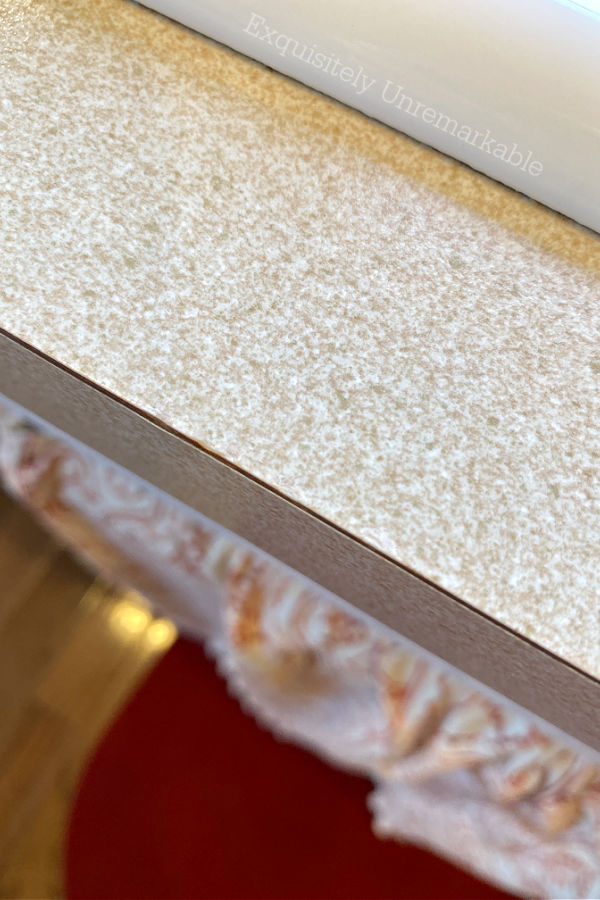
Laminate countertop edge repair – DoItYourself.com Community Forums

How to Repair and Refinish Laminate Countertops Refinishing

Laminate countertop chipped4 months old..help? Hometalk
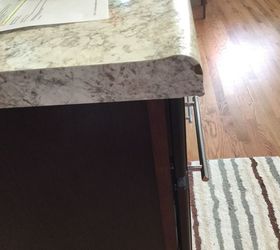
How to Fix Kitchen Laminate Countertop – Water Damage

Related articles:
- Black Marble Laminate Countertop
- Painting Kitchen Laminate Countertops
- Quartz Laminate Countertops
- Laminate Countertops Installation
- Laminate Countertop For Kitchen Island
- Kitchen Island Laminate Countertops
- Cheap Laminate Countertops
- Laminate Countertops That Look Like Stone
- Plastic Laminate Countertops
- Laminate Countertop Ideas For Kitchen
